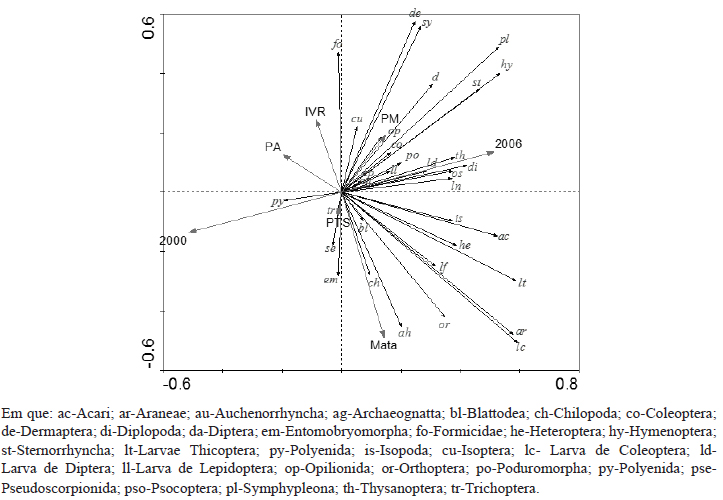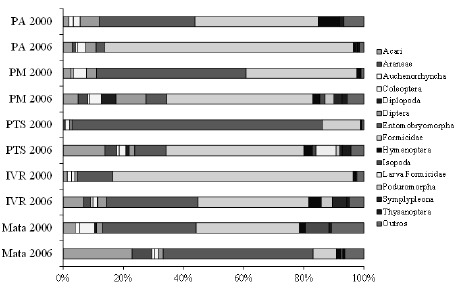ABSTRACT
The diversity, richness and composition of the soil epigeous fauna community were evaluated in a re-vegetated gully at the Instituto Federal de Educação (IFRJ) campus Nilo Peçanha, in the municipality of Pinheiral, Rio de Janeiro state. Revegetation was performed in 2000, and consisted of four different strategies involving N-fixing trees: planting Acacia mangium Willd. (PA); planting Mimosa caesalpiniifolia Benth. (PM); on the outer edges of the gully head (PTS); and planting a mix of legume tree species into the gully (IVR2000). Acacia mangium and Mimosa caesalpiniifolia were planted above the gully head. A nearby 20-year secondary forest remnant was used as a reference site. Ten pitfall traps were used for the sampling of epigeous fauna at each one of the five areas (MOLDENKE, 1994). Sampling was performe in May 2000, June 2006, and April 2008. Six years after revegetation has started, fauna group richness and diversity increased both into the gully and in Mimosa caesalpiniifolia plantation. For the 2000 and 2006 samplings a PCA showed that groups were mostly associated to 2006, and completely opposite to 2000. Acacia mangium plantation had the lowest group richness. In the 2008 sampling, pasture showed the lowest group richness, and according to the PCA groups into the gully were associated to 2008, and completely opposite to 2000 and 2006. Formicidae and Collembola (Entomobryomorpha) were dominant in all sampled areas, both in 2000 and 2008, and into the gully in 2006 as well.
Keywords:
recovery of degraded areas; leguminous tree; epigeal fauna





